Iamgold takes the autonomous route
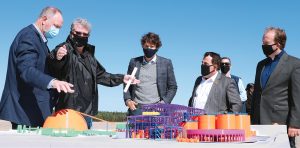
John Yakabuski, Ontario’s minister of natural resources; Gordon Stothart, president and CEO of Iamgold; Prime Minister Justin Trudeau; Marc Serré, Sudbury MP; and Paul Lefebvre, Nickel Belt MP and parliamentary secretary, at the ground-breaking ceremony for Côté in September 2020. Credit: Adam Scotti
With construction underway at the gold project in northern Ontario, roughly halfway between Timmins and Sudbury and 20 km southwest of Gogama, Iamgold is working to develop Ontario’s first autonomous open pit mine at the site. This involves plans for fully autonomous drills and trucks, with manned loading and support equipment.
The project – a 70/30 joint venture with Japan-based Sumitomo Metal Mining – has an estimated mine life of 18 years, based on a 2018 feasibility study. After receiving key permits related to impacts on fish habitats and tailings management last June, Iamgold announced that it would be proceeding with the construction of Côté in July and held a ground-breaking ceremony in September. First gold is expected in the second half of 2023, with full production expected by mid-2024.
“We are building a mine to be around for twenty-five, thirty years, so we are not building a mine of 1970, we are looking to build the mine of 2030,” Gordon Stothart, Iamgold’s president and CEO, said in a January interview with CMJ.
The Toronto-based company already has autonomous drilling capability at some of its other mines, such as the Essakane open pit in Burkina Faso, with rigs moving between holes on a pattern autonomously. In addition to autonomous drilling, Côté will also employ autonomous technology to hauling; the autonomous system will figure out the appropriate destination for mining trucks, based on the type of material being loaded (ore versus waste).
In terms of safety for the system planned for Côté, Stothart says that, with the press of a button, anybody will be able shut down the whole system, if required.
Iamgold’s plans for the site include an ultimate pit that would be approximately 1,600 metres long, 1,250 metres wide and up to 500 metres deep.
Implementation from the get-go
In terms of the rationale behind the choice to use autonomous technology at Côté, Stothart notes that the time to make decision to use this type of machinery is at the outset of a project. For instance, in terms of training, the workforce will only need technician-level training specific to autonomous equipment.
Stothart also explained that while autonomous or remote capability has been available for some of the larger pit trucks for over 30 years, it’s taken a long time to implement. Reasons include the capital investments required and that, once the decision is made, a company is locked into it for the life of the mine.
“We looked around and we (saw that) the technology was becoming mature with some very positive implementations in Australia and Chile, and starting to come into Canada,” he said.
As part of its on-the-ground research on autonomous mining units, members of Iamgold’s technical team travelled to operating sites already using autonomous technology: this included mines in Chile and Australia, as well as the Fort Hill oilsands mine in Alberta.
The amenability of pit drills and trucks to automation is related to the types of jobs done by these units, which do not require a lot of onboard control, unlike front-end loaders.
The automation of equipment brings with it several potential benefits, Stothart says. These include reduced maintenance costs, as the units are continuously operating at their optimal levels, as well as increased availability and a detailed operating record.
“We don’t have shift change, we don’t have lunch hour, we are not shutting down equipment because the radio or the air conditioning in the truck or the heater isn’t working. You’re buying a $2 to $3-million piece of equipment, and you’re going to get maximum use out of it.”
Caterpillar and Epiroc are involved with supplying the autonomous units for Côté.
Collaborative mine build
Based on the 2018 feasibility, and incorporating technical updates published in July 2020, Côté is expected to generate an average of 367,000 gold oz. annually over 18 years of mine life at all-in sustaining costs of US$771 per oz. The latest capital cost estimate for the 36,000 t/d operation was at US$1.3 billion, with an additional US$1.1 billion required in sustaining capital over the life of the mine. Assuming US$1,350 per oz. gold, the after-tax net present value for the development comes in at US$1.1 billion, at a 5% discount rate, with a 15.3% internal rate of return and a 3.7-year payback.
While historically, Iamgold has been a “build-your-own” company, building assets such as the Westwood underground mine in Quebec and the Rosebel open pit operation in Suriname, the company decided on a different development approach for Côté.
“For a project the size of Côté, plus the fact that it’s a JV operation, it made sense for us to go to an EPCM (engineering, procurement and construction management) contract.”
Scotland-based Wood, through its predecessor AMEC, has been involved with the project since 2011 and Iamgold continues to work with Wood on the development. The engineering and consulting company’s mining and minerals division has capabilities ranging from initial concept studies through to project delivery and operations.
Wood is in charge of executing the EPCM contract for Côté. Iamgold also has a development team based out of Longueuil in Quebec that is closely working with the company, in addition to an operations readiness team at Côté and project and operations team members in Sudbury.
Stothart adds that the recent mining market downturn and resulting slowdown in mine development present a unique opportunity for a new build.
“There are not a lot of other projects in construction right now, it gives us good access to engineering support and top-quality contractors.”
Incremental development
In a January interview with CMJ, Dave Lawson, president of Wood’s mining and minerals business, highlighted the importance of client relationships throughout the conceptual, design and development stages.
Wood, as AMEC, started working on Côté in 2011, with a contract for approximately US$50,000.
AMEC then completed the 2017 prefeasibility for the project and Wood delivered the 2018 feasibility study (Wood’s acquisition of AMEC closed in October 2017).
While it’s not typical for the same consulting and engineering company to work on a mining project from exploration through to the mine build, Lawson notes that Wood’s breadth of service offerings made this continuity possible.
According to Lawson, one of the unique aspects about Côté is that the client moved ahead with the project in stages –
engineering, followed by procurement, and now, construction (the incremental approach was, in part, due to permitting and financing constraints, as well as due to the gold price).
“It did allow us to spend more time on the engineering phase and I think we’re going to see that is a benefit as we go forward,” Lawson said. “One of the benefits of having this extra time on the engineering was to be able to analyze certain situations and find ways to do it cheaper and quicker or better.”
Delivering a mine
As Wood delivers the EPCM contract for Côté, it will hire specialized companies, on behalf of Iamgold, for specialized work. With pit construction and stockpiling starting up in the first half of 2021, the project handover to the operations team is expected to be complete in late 2023.
“It’s really a set up where we manage the contractors and we manage the engineering and we report into Côté gold. We have a project sponsor group, it meets once every couple of months to overview the project and make sure that the project team – both the client’s team and our team – are working in harmony and that the direction of travel for the project is correct.”
In terms of ensuring a smooth transition from development to operations, Lawson describes this process as a gradual shift where, as a plant ramps up, Wood starts to back away and the client gets progressively more involved. For this to happen, a commissioning team needs to be hired during the engineering phase and the client needs start putting an operations team in place during mine construction.
Lawson notes that a successful ramp-up ultimately comes back to having an established relationship with trust between the operator and Wood, and seeing it “not as an exercise in building a plant but seeing it as an exercise in producing an operating mine.”
He adds: “There’s no point in building it and then walking away if it doesn’t do what it’s supposed to do.”
A design with upside
While Iamgold has held its interest in Côté for close to 10 years – the company acquired the project in 2012 – its vision for the operation has evolved with time.
When it first acquired the asset for $608 million in cash, Côté hosted 35 million tonnes of indicated resources grading 0.82 g/t gold for 930,000 gold oz. and 204 million tonnes of inferred resources at 0.91 g/t gold for 5.9 million oz.
“Our original vision was for a bigger project, more along the lines of double the size of what we are actually building,” Stothart says. Iamgold ultimately decided that the price tag associated with a project of that size was not appropriate for a company of its size.
Wood, through AMEC, consulted on the project and outlined approximately US$425 million in savings from developing a smaller throughput operation.
In 2017, Iamgold also decided to bring in Sumitomo as a joint venture partner.
Today, total measured and indicated resources stand at 365.5 million tonnes grading 0.87 g/t gold for a total of 10.2 million oz. Additional inferred resources include 189.6 million tonnes at 0.6 g/t gold for 3.8 million oz. There are a total of 7.3 million oz. of proven and probable reserves within the measured and indicated resource.
With this substantial resource upside beyond established reserves, Stothart notes that the company is committed to developing the current design version of the asset before considering an expansion.
“We’re going to be pretty pedantic with building the project we said we’re going to build. Historically, at Iamgold, we’ve been pretty conservative with our estimates, what we expect costs and construction periods to be, and historically we’ve done better than we said we were going to do.”
He adds that given the company’s track record, he would not be surprised if the mine exceeds both cost and throughput expectations.
The executive also highlights a few find – Gosselin – less than 2 km away from the proposed Côté pits where an initial resource is expected this year. The benefits of autonomous haulage and drilling will likely be an important consideration in any potential future economic assessment of a mine expansion, together with empirical knowledge from Côté.
In January, Iamgold released assay results for 24 diamond drill holes completed as part of a delineation drill program at Gosselin. The drill highlights include 417.3 metres of 0.95 g/t gold; 353 metres of 1.04 g/t gold; and 202 metres of 1.22 g/t gold.
Given that the Côté project is within a 540-sq.-km land package, Stothart is optimistic in his outlook for the asset.
“I think this operation is going to be around for a long, long time.”
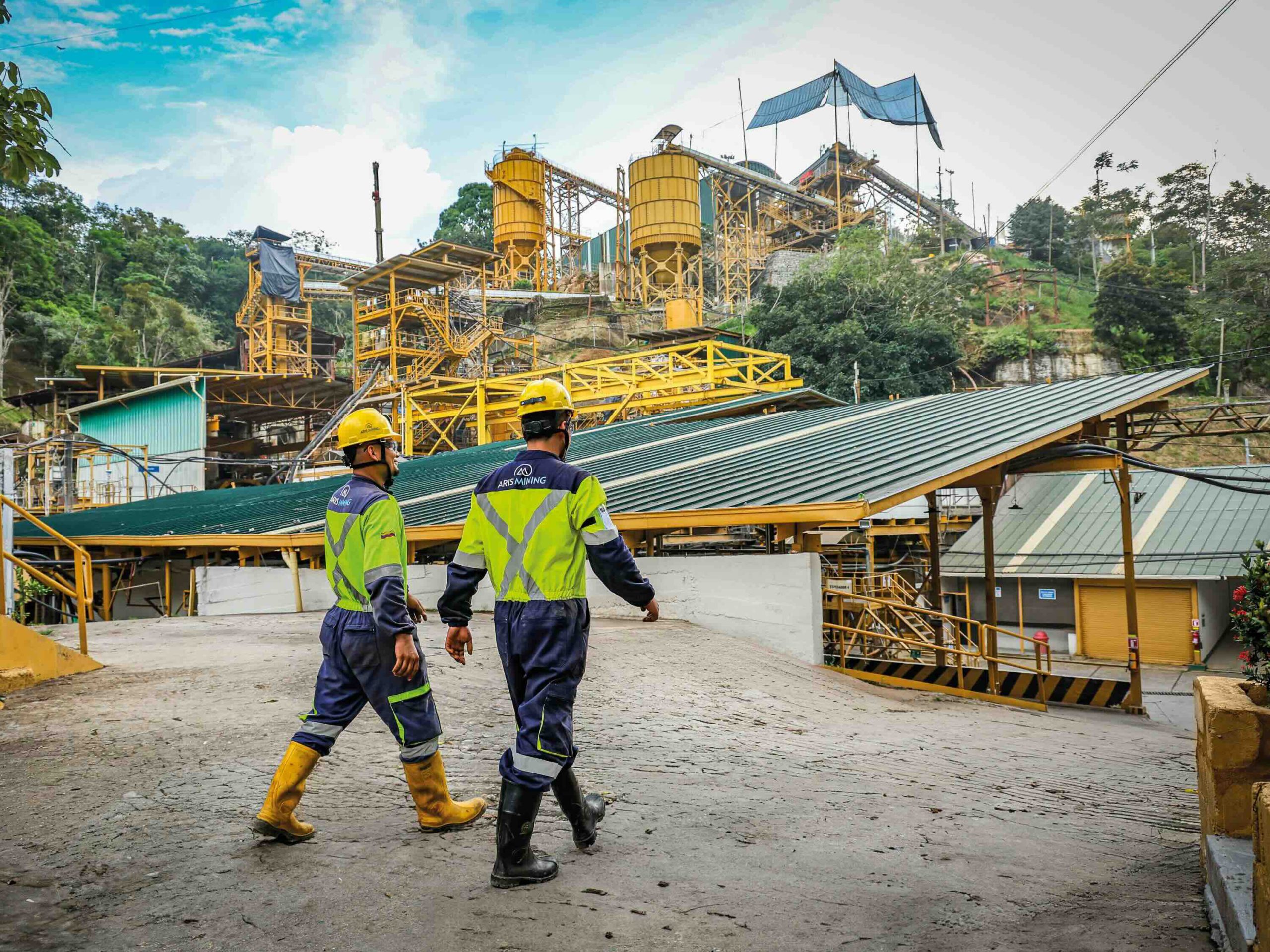

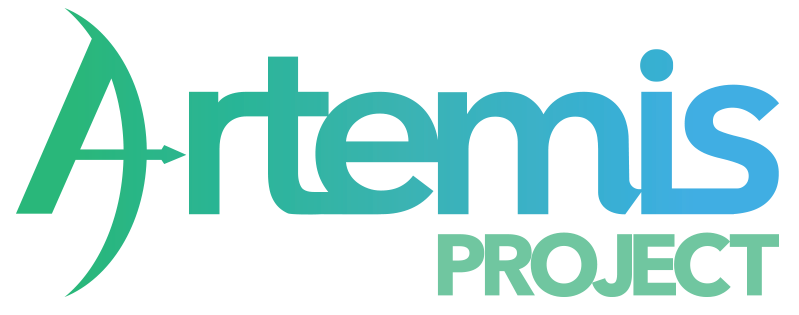
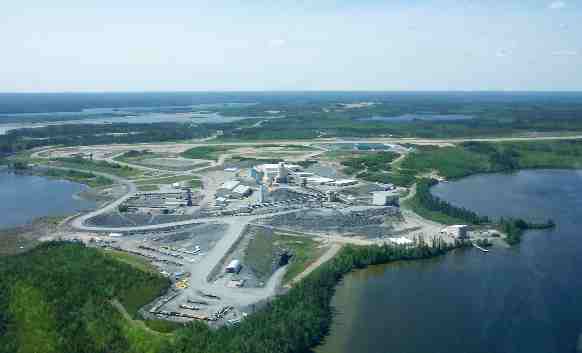
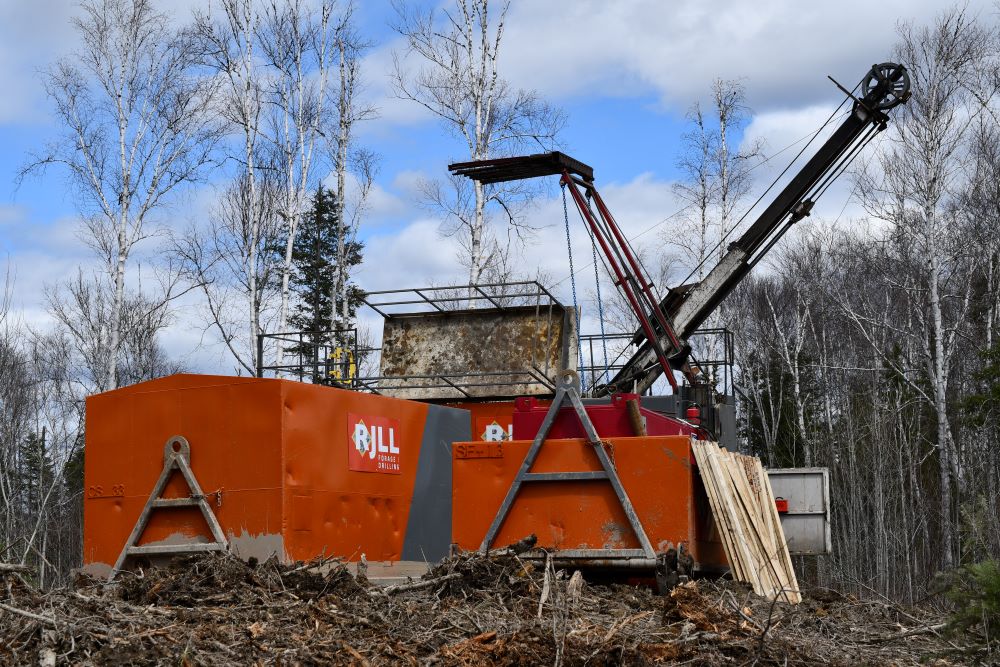
Comments